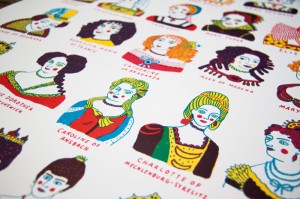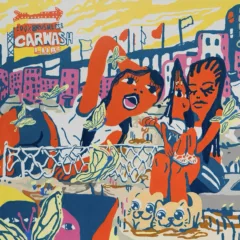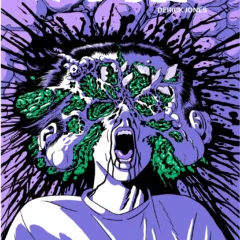I learned of Nobrow Press when I saw one of their ‘books’ in the shop at the Whitechapel Art Gallery, London. I use quotes because the publication in question, Rise and Fall, by the American Artist, Micah Lindberg, was a text-less accordion fold (or leporello), printed on both sides. I wrote about it when discussing Holiday Books on November 6, 2012. I was struck by the quality of the printing, as well as the format, both of which were closer to a fine art print than to a traditional book. From an e-mail correspondence I learned that the press used a technique called spot color, commonly employed for corporate graphics – where the ink is mixed before printing, rather than the more usual, cyan-magenta-yellow-black screens used for half-tone printing. I made arrangements to visit the press on a recent trip to London.
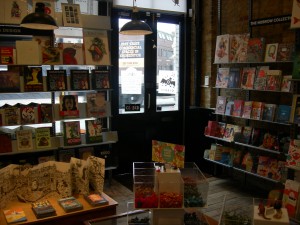
Nobrow has a storefront space in Shoreditch, a neighborhood in East London still scarred by the urban destruction of WWII bombing. Friends told me that the neighborhood is becoming fashionable, but the only evidence of that on Great Eastern Street was the presence of several upscale chains of lunch shops that cater to office workers in the financial district to the West. A fair amount of street art was in evidence – some possibly commissioned, other work clearly opportunistic.
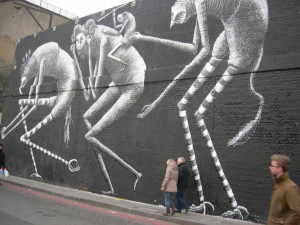
I met Sam Arthur, a design graduate from St. Martin’s School of Art who, with Alex Spiro, another St. Martin’s grad, started the press in late 2008. They have a small retail shop, a back office for design and business activities, a basement with inventory and a silk-screen press which they use for occasional limited-run books and fine art prints. According to their promotional material, they publish books with their inherent qualities as objects, which are designed to entice you to pick them up, read them, cherish them and collect them. All are illustrated, and none of them is likely to be replaced by a Kindle.
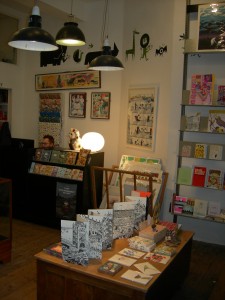
Nobrow considers its production within the larger territory of comics, and regularly attends comics conferences, although the work is consistently decorous and attractive, even when the story lines are dark or grim. Nobrow’s work has none of the rawness and cheap production I associate with independent comics. The frequent use of spot color yields flat, un-modulated areas of color similar to screen printing, and Nobrow’s work has visual antecedents in English illustration, printed wallpapers, textiles, and ceramics of the late 19th and 20th centuries. I’d guess that Arthur and Spiro have spent time in the study collections of the Victoria and Albert Museum looking at work by Walter Crane, Eric Gill, Suzie Cooper, and artists of the Omega Workshops, among others.
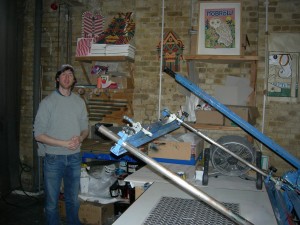
Nobrow’s illustrators are an international group, some with significant publication history. A few of their titles are translated into French (Alex mentioned that France has the largest market for comics outside Japan), while others originally published in French or German have been produced as English editions. The store includes a selection of self-published zines and books from other publishers that might appeal to their audience, and indicates how the press situates itself. There were books by Art Spiegelman, Robert Crumb, Gary Panter and Joe Sacco, as well as a volume on outsider art and, more surprisingly, a monograph on Aaron Douglas. The major Harlem Renaissance artist is most widely known as a muralist, but he also did a lot of book and magazine illustrations. I saw nothing by Chris Ware, the comic artist whose work is most consistent with Nobrow’s aesthetic.
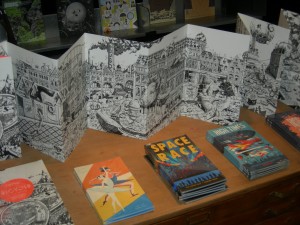
At a first glance, Nobrow books resemble children’s literature, and they have created an imprint, Flying Eye, that specializes in books for children. Publisher’s Weekly selected one of their titles as among the top illustrated children’s books of 2012. But many of Nobrow’s titles have a sinister edge similar to the illustrative work of artists such as Marcel Dzama, Amy Cutler and Kara Walker. Nobrow exists in that liminal space between art and commerce – where fine artists survive off the market for music, newspaper and magazine illustrations, skateboards, tee shirts, and small, plastic figures designed for buyers old enough to earn their own discretionary funds.
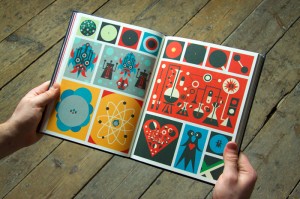
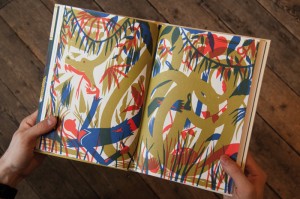
It is more than a century after artists such as William Morris attempted to break down barriers between crafts and art. Generations of artists have followed the Suprematists’ quest to create art for other than the monied classes, and work by un-trained and street artists is increasingly exhibited in mainstream museums. Yet the small run production of businesses such as Nobrow is still beyond the realm of the art world. That should change.
